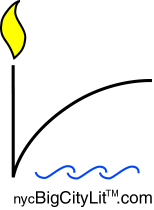
Nov '03 [Home]
Editor's Preface
Intermediating Surfaces: The Sk(in) Between
by Laurel Blossom

St. Jerome and the Lion
Glomi glass technique: 17th C., Italy
 Nov '03 [Home] Editor's Preface Intermediating Surfaces: The Sk(in) Between by Laurel Blossom  St. Jerome and the Lion Glomi glass technique: 17th C., Italy |
| . | . | . | What is the nature of being in between? What are its components, how does it work, what does it mean to be in between? The poems offered here, I hope, will intrigue your imagination as they explore the varied possibilities of in-between-ness. I myself have always been obsessed, for instance, with separation, one of the things in-between-ness causes. I suppose that's how this feature got started; I began thinking about skin. Skin is a surface, an in between; it divides interior from exterior, subjective from objective, self from other. It defines them. Definition is one of surface's primary attributes. Fence, death, meniscus, mantle, all surfaces define and confine, coming between one object or one state and another, and, in emotional terms, coming between us and the objects of our desire, whether heart, open land, life everlasting, depth, or etc. Where there's a line, there's longing. We want to get over, under, across, around, into, out of, through. Surface resists. That is its function, to separate, to protect against unwanted intrusion. Yet, even at the hardest rock face, molecules, physical or visual or musical or spiritual, mingle across boundaries. Across a crowded room, there is eye contact or laughter. Exchange happens. Language itself is an in between, a porous membrane of separation and exchange. Poetry, of all language the most sensitive to touch (the most fundamental of the senses), is our most vulnerable instrument of communication, not just between ourselves and others, but also between our own outward and inward experience of life and art. Like the picture in which you can see either positive or negative space, in-between-ness can be seen from two points of view. Some of these poems focus on what is divided (the black profiles) some on the contrasting divider (the white vase). In every case, to be in between is to be ambivalent, because each side depends on the other, black on white and white on black. And how does one express the line? That is the endless fascination of in between. ~ . ~ . ~ [Poems] |